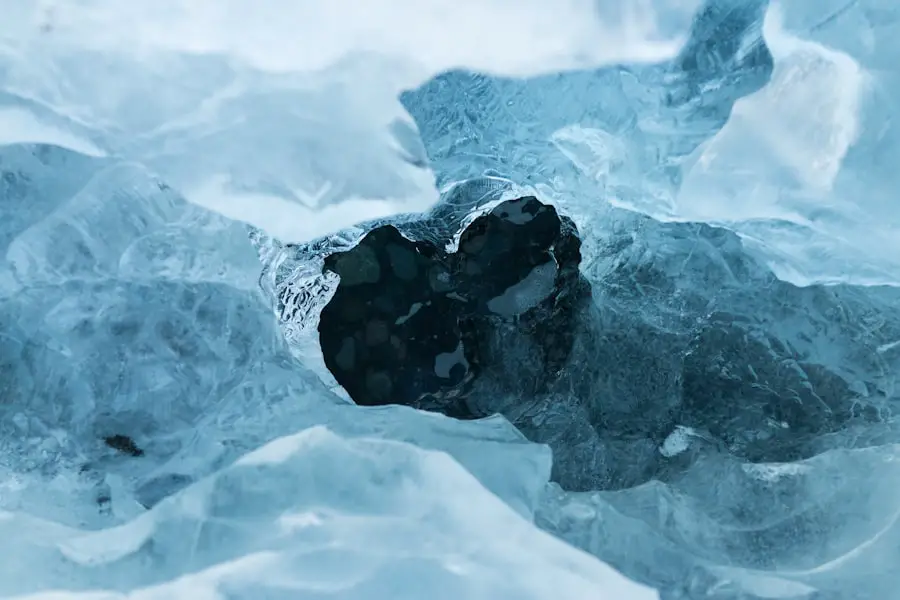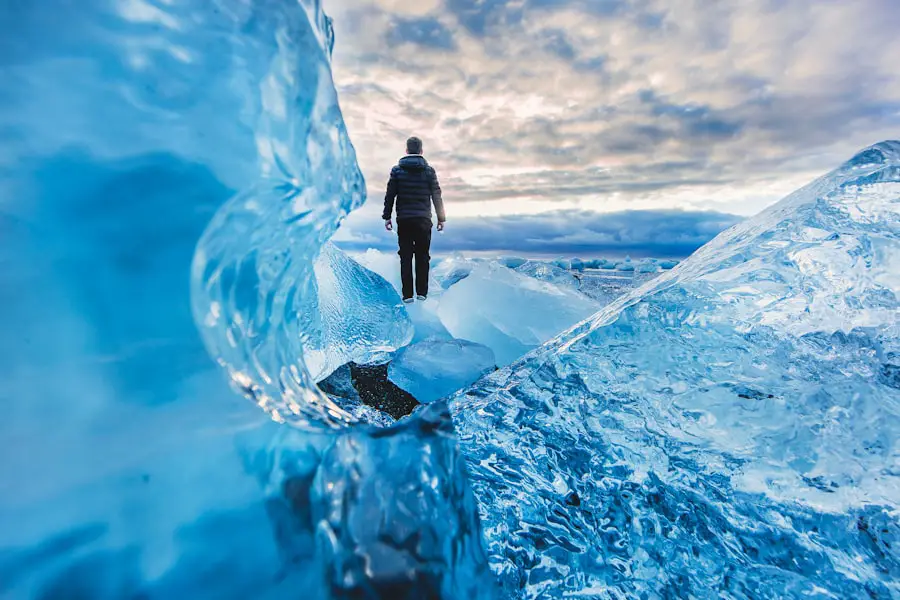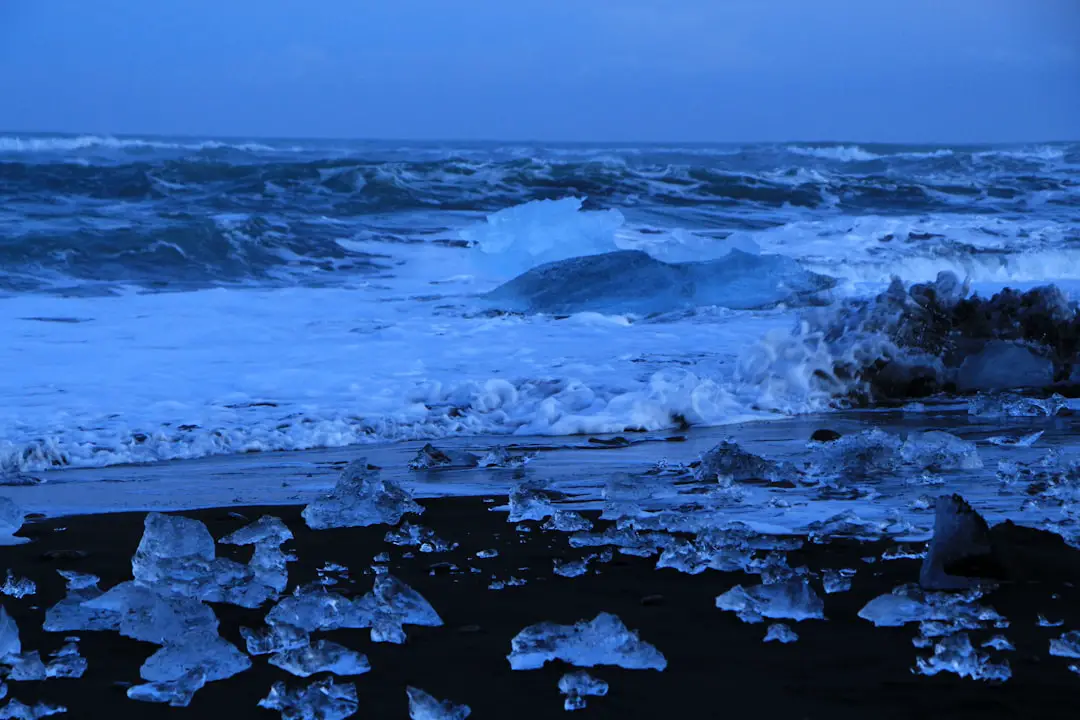Microspikes are specialized traction devices designed to enhance grip on icy or snowy surfaces, making them an essential tool for hikers, climbers, and outdoor enthusiasts. Typically made from durable materials such as stainless steel or aluminum, microspikes feature a series of small, sharp spikes or teeth that protrude from a flexible harness. This design allows them to be easily slipped over hiking boots or shoes, providing immediate traction on slippery terrain.
Unlike traditional crampons, which are more rigid and designed for technical climbing, microspikes offer a balance of flexibility and grip, making them suitable for a variety of winter activities. The concept of microspikes emerged from the need for safer navigation in winter conditions. As outdoor activities gained popularity during the colder months, the demand for effective traction solutions increased.
Microspikes fill this niche by offering a lightweight and portable option that can be easily stowed in a backpack when not in use. Their compact design and ease of use have made them a favorite among casual hikers and serious adventurers alike, allowing users to traverse icy trails with confidence.
Key Takeaways
- Microspikes are traction devices designed to provide grip and stability on icy and snowy terrain during outdoor activities such as hiking and walking.
- Microspikes work by using small metal spikes or chains to grip into the ice and snow, providing traction and preventing slips and falls.
- The benefits of using microspikes include increased safety, stability, and confidence when walking on icy terrain, as well as the ability to maintain a normal walking pace.
- When choosing microspikes, consider factors such as the type of activity, terrain, and fit for your footwear to ensure the best performance and comfort.
- Properly fitting and adjusting microspikes is essential for safety and effectiveness, including ensuring a snug fit and checking for any damage or wear before each use.
How do Microspikes Work?
Microspikes function by utilizing their sharp spikes to penetrate the surface of ice or hard-packed snow, creating friction that prevents slipping. When a hiker steps onto an icy surface while wearing microspikes, the spikes dig into the ice, anchoring the foot and providing stability. This mechanism is particularly effective on steep inclines or declines where the risk of slipping is heightened.
The flexible harness that holds the spikes in place conforms to the shape of the shoe, ensuring a snug fit that maximizes contact with the ground. The design of microspikes allows for a natural walking motion, which is crucial for maintaining balance and reducing fatigue during long hikes. Unlike crampons, which can feel cumbersome and restrict movement, microspikes enable users to walk comfortably on both icy and non-icy surfaces.
This versatility makes them ideal for mixed conditions often encountered in winter hiking, where trails may alternate between snow-covered sections and bare ground.
The Benefits of Using Microspikes

One of the primary benefits of using microspikes is the enhanced safety they provide on slippery surfaces. The risk of falls increases significantly in icy conditions, and microspikes mitigate this danger by offering reliable traction. Hikers can navigate challenging terrain with greater confidence, reducing the likelihood of accidents that could lead to injuries.
This safety aspect is particularly important for those who venture into remote areas where help may not be readily available. In addition to safety, microspikes also improve overall hiking efficiency. With better grip on icy trails, hikers can maintain a steadier pace without constantly worrying about slipping.
This efficiency can lead to more enjoyable experiences in the outdoors, as individuals can focus on the beauty of their surroundings rather than the trepidation of each step. Furthermore, microspikes are lightweight and compact, making them easy to carry along on any winter outing without adding significant bulk to a backpack.
Choosing the Right Microspikes for Your Needs
| Microspike Model | Weight | Material | Spike Length | Price |
|---|---|---|---|---|
| Model A | 12 oz | Stainless Steel | 0.5 inch | |
| Model B | 10 oz | Tungsten Carbide | 0.75 inch | |
| Model C | 8 oz | Aluminum Alloy | 1 inch |
When selecting microspikes, several factors should be considered to ensure they meet your specific needs. First and foremost is the fit; microspikes should be compatible with your footwear. Most models are designed to fit a range of shoe sizes, but it’s essential to check the manufacturer’s sizing guidelines to ensure a proper fit.
A snug fit is crucial for optimal performance, as loose microspikes can shift during use and reduce traction. Another important consideration is the spike length and material. Different models feature varying spike lengths, which can affect performance on different types of ice or snow.
Shorter spikes may be sufficient for hard-packed snow, while longer spikes are better suited for sheer ice or mixed conditions. Additionally, the material of the spikes can influence durability; stainless steel spikes tend to offer better longevity compared to aluminum options. Evaluating your typical hiking conditions will help you choose the most appropriate microspikes for your adventures.
How to Properly Fit and Adjust Microspikes
Fitting microspikes correctly is essential for maximizing their effectiveness and ensuring safety during use. To begin, place the microspikes over your footwear while seated or standing on a flat surface. Ensure that the spikes are positioned correctly over the sole of your shoe, with the front spikes aligned with the toe area and the rear spikes positioned near the heel.
Once in place, secure any straps or buckles according to the manufacturer’s instructions. After securing the microspikes, it’s advisable to take a few steps to test their fit. Pay attention to any shifting or discomfort; if they feel loose or slide around, adjustments may be necessary.
Many models come with adjustable straps that allow you to tighten or loosen the fit as needed. It’s also beneficial to practice walking in them on a flat surface before heading out on a hike, as this will help you become accustomed to their feel and ensure they are properly fitted.
Safety Tips for Hiking with Microspikes

While microspikes significantly enhance safety on icy terrain, it’s important to follow certain precautions when using them. First, always assess trail conditions before heading out; if ice is present but conditions are unstable or unpredictable, consider postponing your hike or choosing an alternative route. Additionally, be mindful of your surroundings and watch for changes in terrain that may require adjustments in your footing or technique.
When hiking with microspikes, it’s also crucial to maintain awareness of your body’s movements. Take shorter strides and focus on placing your feet carefully to maximize traction. Avoid sudden movements or quick changes in direction that could lead to slips or falls.
Lastly, consider hiking with a partner or group; having others around can provide additional support and assistance in case of emergencies.
When and Where to Use Microspikes
Microspikes are best utilized in specific conditions where ice or hard-packed snow is prevalent. They are particularly effective on trails that have been compacted by foot traffic or where melting and refreezing have created slick surfaces. Common scenarios include winter hiking in mountainous regions, traversing frozen lakes, or navigating icy paths in national parks during colder months.
However, it’s important to recognize when microspikes may not be suitable. For example, if you encounter deep snow where sinking is likely, snowshoes may be a better option as they provide flotation rather than just traction. Similarly, if you find yourself on steep technical terrain requiring precise foot placements and advanced climbing techniques, crampons would be more appropriate than microspikes.
Alternatives to Microspikes for Icy Terrain
While microspikes are an excellent choice for many winter hiking scenarios, there are alternatives that may be more suitable depending on specific conditions and personal preferences. Crampons are one such alternative; they feature longer and more aggressive spikes designed for technical climbing on steep ice or mixed terrain. Crampons provide superior grip but can be heavier and less versatile than microspikes.
Another option is using traction devices like Yaktrax or similar products that feature coils or chains instead of spikes. These devices can be effective on packed snow but may not perform as well on sheer ice compared to microspikes or crampons. Additionally, snowshoes are ideal for deep snow conditions where flotation is necessary; they prevent sinking into soft snow while allowing for easier movement across snowy landscapes.
Maintaining and Caring for Microspikes
Proper maintenance of microspikes is essential for ensuring their longevity and performance over time. After each use, it’s advisable to clean them thoroughly to remove any dirt, snow, or ice that may have accumulated during your hike. A soft brush can be used to gently scrub away debris without damaging the spikes or harness material.
Storage is another critical aspect of care; keep microspikes in a cool, dry place away from direct sunlight when not in use. Avoid storing them in damp environments where rust could develop on metal components. Regularly inspect your microspikes for signs of wear or damage; if any spikes are bent or broken, it’s important to replace them before your next outing to ensure optimal performance.
Reviews and Recommendations for Different Microspike Brands
Several brands dominate the market for microspikes, each offering unique features and benefits tailored to different user needs. Kahtoola is one of the most recognized names in this space; their KTS model is known for its durability and excellent grip on icy surfaces. Users often praise its ease of use and secure fit over various footwear types.
Another popular option is the Hillsound Trail Crampon Ultra; this model features longer spikes designed for aggressive traction while remaining lightweight and flexible enough for comfortable walking. Many hikers appreciate its robust construction and ability to handle mixed terrain effectively. For those seeking budget-friendly options without sacrificing quality, brands like Yaktrax offer reliable alternatives that perform well in less extreme conditions.
Their designs focus on affordability while still providing adequate traction for casual winter hikes.
Why Microspikes are Essential for Hiking on Icy Terrain
Microspikes have become an indispensable tool for anyone venturing into icy terrain during winter months. Their ability to provide reliable traction enhances safety and confidence while navigating slippery trails, making outdoor adventures more enjoyable and accessible. With various options available on the market tailored to different needs and preferences, hikers can find the perfect pair of microspikes suited for their specific activities.
By understanding how microspikes work, how to choose the right pair, and how to maintain them properly, outdoor enthusiasts can maximize their performance and longevity. Whether traversing snowy mountains or enjoying local trails during winter months, microspikes empower hikers to embrace the beauty of nature even in challenging conditions.
If you’re planning a hiking trip and wondering what microspikes are for, you may also be interested in checking out this article on the
